Story and photos by Jonathan Sharp
The 2023 Freddie March Spirit of Aviation (as differentiated from the Freddie March Memorial Race for automobiles) was again held as part of the Goodwood Revival on September 13th. For VeloceToday, this is not a time sensitive event, and allows us to publish this unusual article at any time. And time just flies by…
Whilst it would be very easy for a UK-based aviation event to fill a whole airfield with warbirds of the fighter and bomber variety, it is the mix of aircraft found at Goodwood that makes the Freddie March event so special.
While every year the entry contains a few fighter type warbirds, and has previously featured bombers and transporters, it is often the civilian aircraft that have the more interesting back story, and many of them during the war were pressed into military service becoming temporary warbirds themselves. We are all familiar with the Spitfires and Mustangs but it was the less well known types, the unsung heroes, that carried out the myriad smaller tasks that also help win us the freedom we enjoy today. For example, without Tiger Moths there might not be RAF pilots. The Spartan Executive featured here was built to carry executives in peace time but pressed into military service at the time of great need. The Lockheed Electra, built as a small airliner, became a spy plane. The Leopard Moth was a target towing aircraft, and even the Vega Gull became a warbird whilst in the hands of the Luftwaffe. Every one of the often overlooked aircraft below has a special and fascinating story. So please enjoy the Spitfire, Hurricane and Swordfish featured but raise a glass to the little guys.
Her are the recipients of the 2023 Freddie March Spirit of Aviation Awards
1st place 1936 Focke Wulf Stieglitz – owner Richard Menage.
2nd place 1939 Spartan Executive – owner Sebastien Mazzuchetti
3rd place 1941 Fairey Swordfish – owner Navy Wings Heritage Flight.
The Rob Wildeboer Cup: Rob was instrumental in establishing and curating the Freddie March Spirit of Aviation display. The Rob Wildeboer Cup each year is awarded to the best restoration of an aircraft in the Freddie March Spirit of Aviation, as chosen by his colleagues. A fitting tribute to Rob’s lifelong passion for engineering.
2023 winner 1928 Travel Air 4000 – owner Tom Leaver
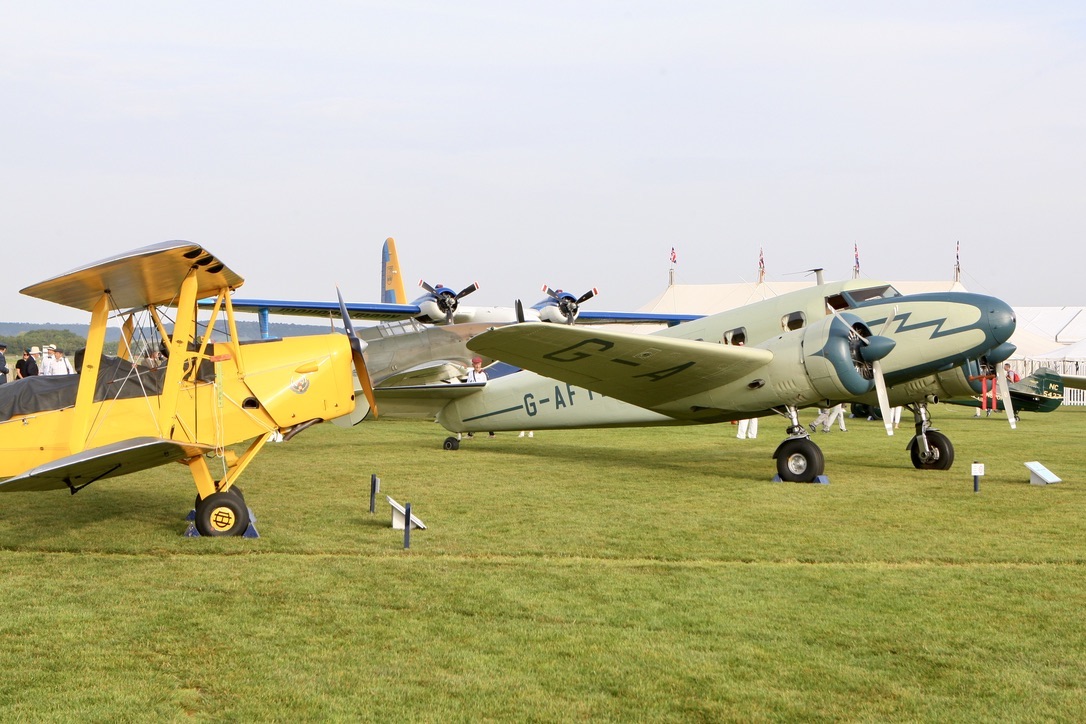
Entered by Graham Peacock, 1936 Lockheed 12A Electra Junior. The early history of G-AFTL is rather fascinating. Owned and operated by the infamous Australian Sir Sidney Cotton G-AFTL became the first ever MI6 spy plane. Operated by Cotton under the guise of Imperial Airways during the lead up to the start of WW2, Cotton would fly various German dignitaries on charter flights to various locations within German and soon to be Axis locations and during these flights would subtly press a button located under his seat to actuate the three Leica reporter cameras located under the passenger sets capturing invaluable images of Germany and its wartime preparations right up until the day prior to the declaration of war by the UK. Powered by two Pratt and Whitney Wasp Junior Radial engines each rated at 450hp the model 12 Electra Junior was designed to carry six passengers and, being as it was considered too small for airline operations, was mainly used as corporate transportation.
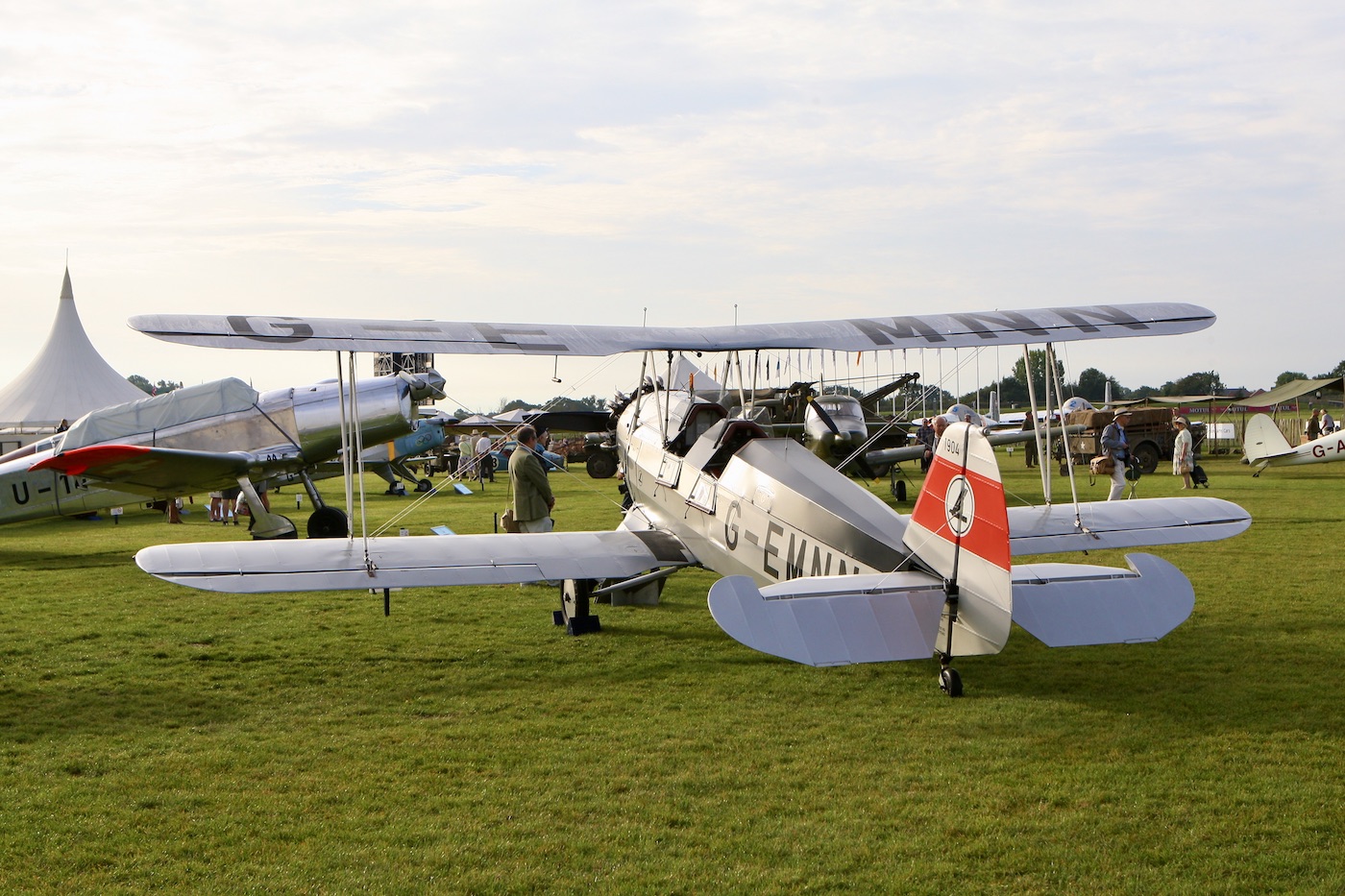
1936 Focke Wulf FW44J Stieglitz, entered by Richard Menage. The FW44 Stieglitz (Goldfinch) developed by Kurt Tank (best known for the FW190 Butcher Bird) first took flight in 1932. Designed as a basic trainer for the Luftwaffe, this example was constructed in Bremen in 1936 and then purchased by the Swedish Air Force in 1937. By 1950 the aircraft had passed into the civilian market and was being used to tow targets, before becoming a museum exhibit in 1966. The current owner purchased her in 2012, Constructed from fabric covered steel tubes with wooden wings and powered by a 140hp Siemens Sh 14a radial engine. Of the 3600 examples constructed fewer than 15 remain airworthy, and this example is one of just five Bremen built examples.

1962 Pilatus PC-6-340 entered by Beat Roos. Pilatus Flugzeugwerke AG of Lucerne Switzerland was founded in December 1939. The high-wing multi-role, short take-off and landing utility PC6 entered production in 1959 with over 600 examples being constructed in Switzerland and the USA before production ceased in 2022. This example, HB-FAL was constructed in Switzerland and served as the prototype float plane derivative before being exported to Canada in 1963. After seeing service with various operators in North American she returned to Europe in 2015 and was modified to PC-6/340 specification before returning to the air in January 2022. She is one of the ten oldest surviving examples in the world and is the only example fitted with a Lycoming piston engine. She now carries the markings of PC6 HB-FAN s/n 337 as used as a support aircraft for the successful 1960 Swiss Expedition to climb the 29.975ft Dhaulagiri (White Mountain)
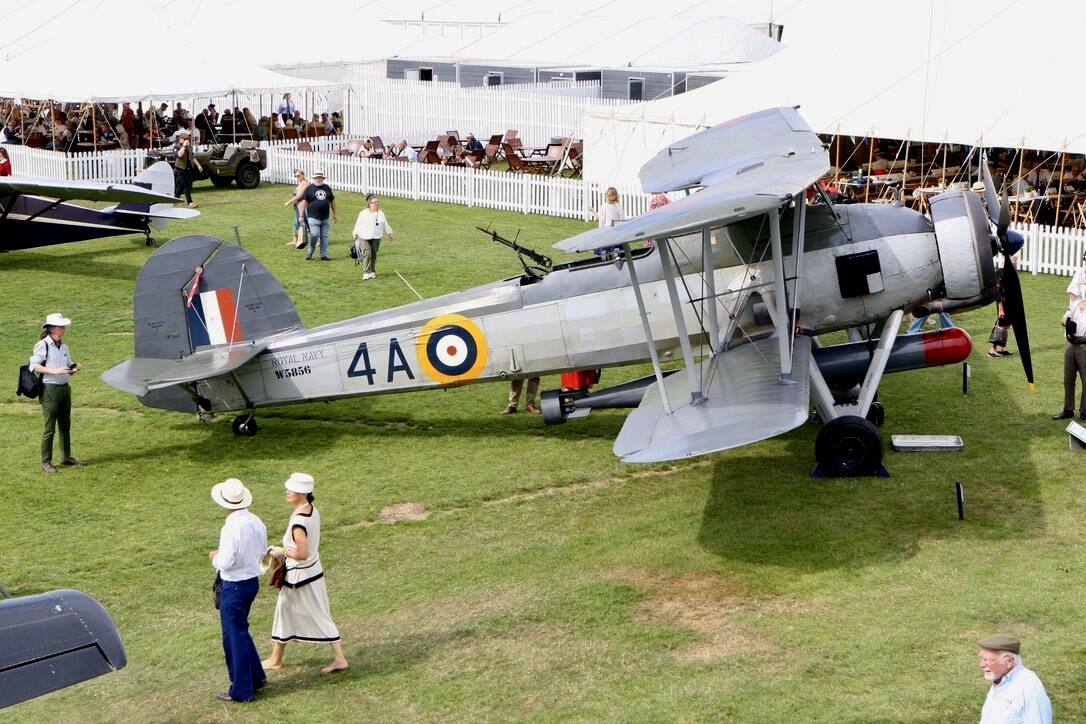
1941 Fairy Swordfish MK1 W5856. Entered by Navy Wings. Built by Blackburn Aircraft (Swordfish built by Blackburn were often known as Blackfish) her first flight was on Trafalgar Day (21st October) 1941 following which she was delivered to 82MU for transportation to Gibraltar where she serviced with the Royal Navy Mediterranean fleet , probably flying patrols over the straits of Gibraltar. She returned to Fairey’s factory in Stockport for refurbishment during the winter of 1942/43 before being used for advanced flying training and trials.
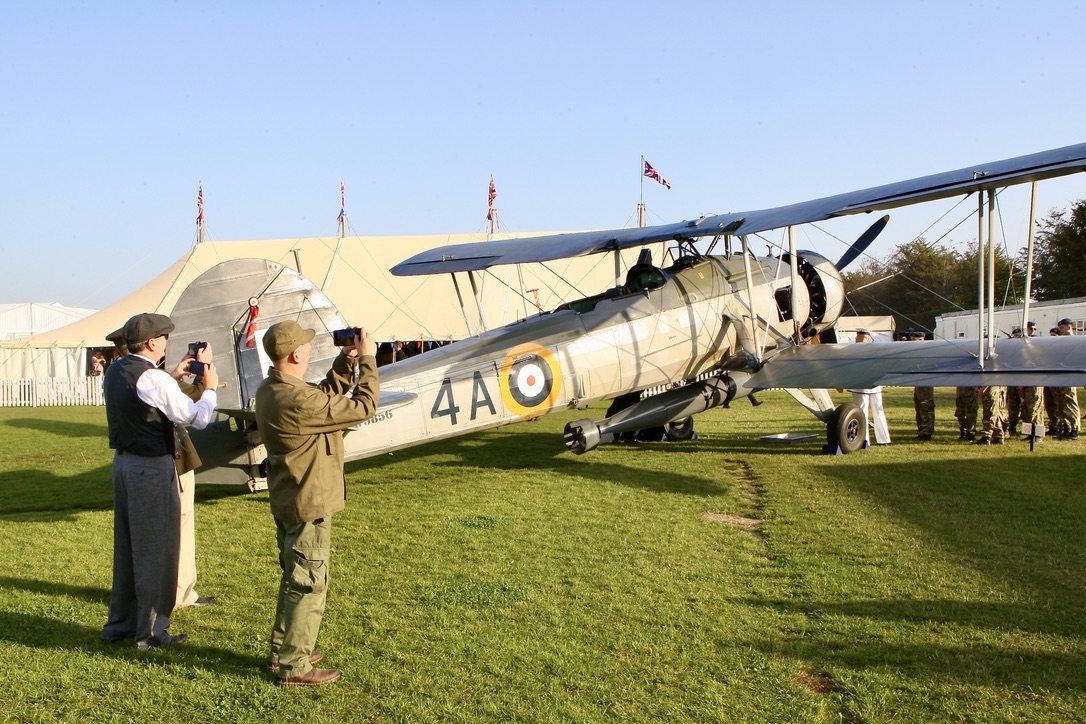
In 1944 she passed into the care of the Royal Canadian Navy where she continued to be used for training. Following the end of the war, and after spending some time in storage, she was disposed of into the civilian market and was at one time owned by a farmer who had planned to use her for crop spraying. Sir William Roberts purchased her for his Strathallan collection, arriving in crates in a badly corroded state in August 1977. In 1990 she was purchased by British Aerospace (BAE Systems) and restored to flight, and in May 1993 she was gifted to the Royal Navy Historic flight. In 2003 she was grounded with corrosion in her wing spars but BAE stepped in again and constructed a new set of wings which was delivered in 2012. She returned to the air show circuit in 2015. W5856 is the oldest surviving Stringbag (thus named in period due to her ability to carry most things just like a shoppers stringbag) and now wears the markings of a Swordfish operated by 820 Naval Air Squadron during the attack on the Bismark in 1941.
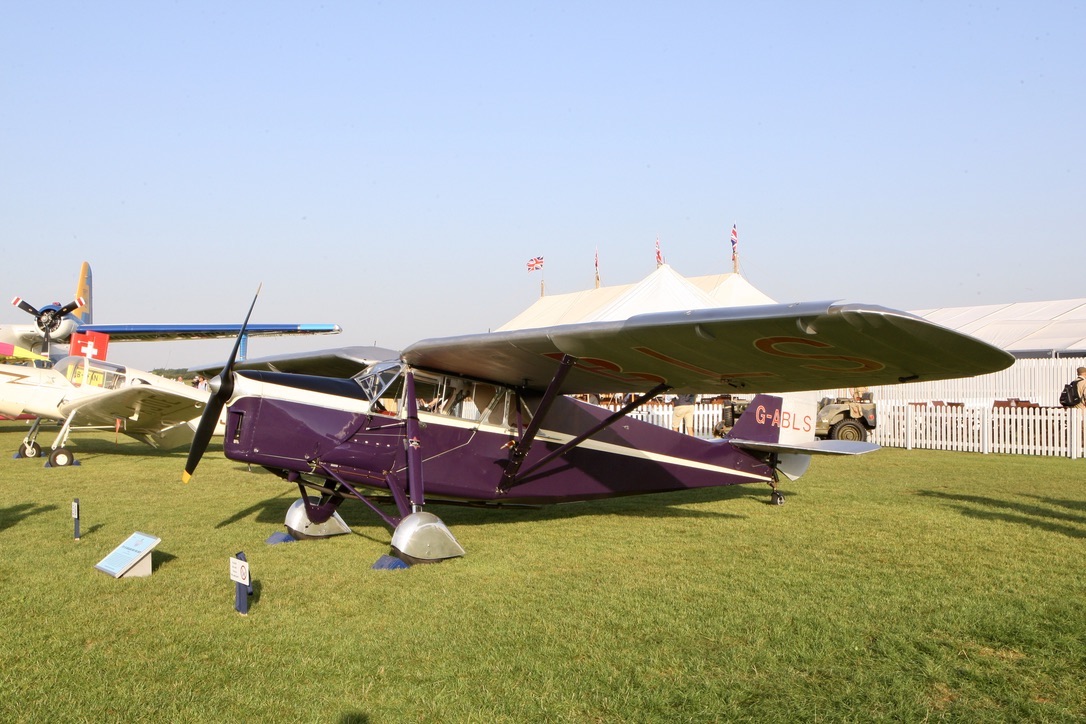
1931 De Havilland DH80 Puss Moth, entered by Tom Harris. Designed to offer private pilots an aircraft with cabin comfort, the DH80 Puss Moth first flew on the 9th September 1929. A total of 259 examples were constructed in the UK with a further 25 built in Canada. This example was first registered to Eric Gandar Dower and formed part of his fledgling Aberdeen Airways, later renamed Allied Airways, for whom she flew until 1945. During that time she also competed in four Kings Cup Air Races with an 8th place finish being her best result. Only flown sporadically between 1945 and 1966 and later rebuilt, the current owner purchased her in 2015 for restoration back to her 1931 colour scheme and condition, a task that was completed in 2019.
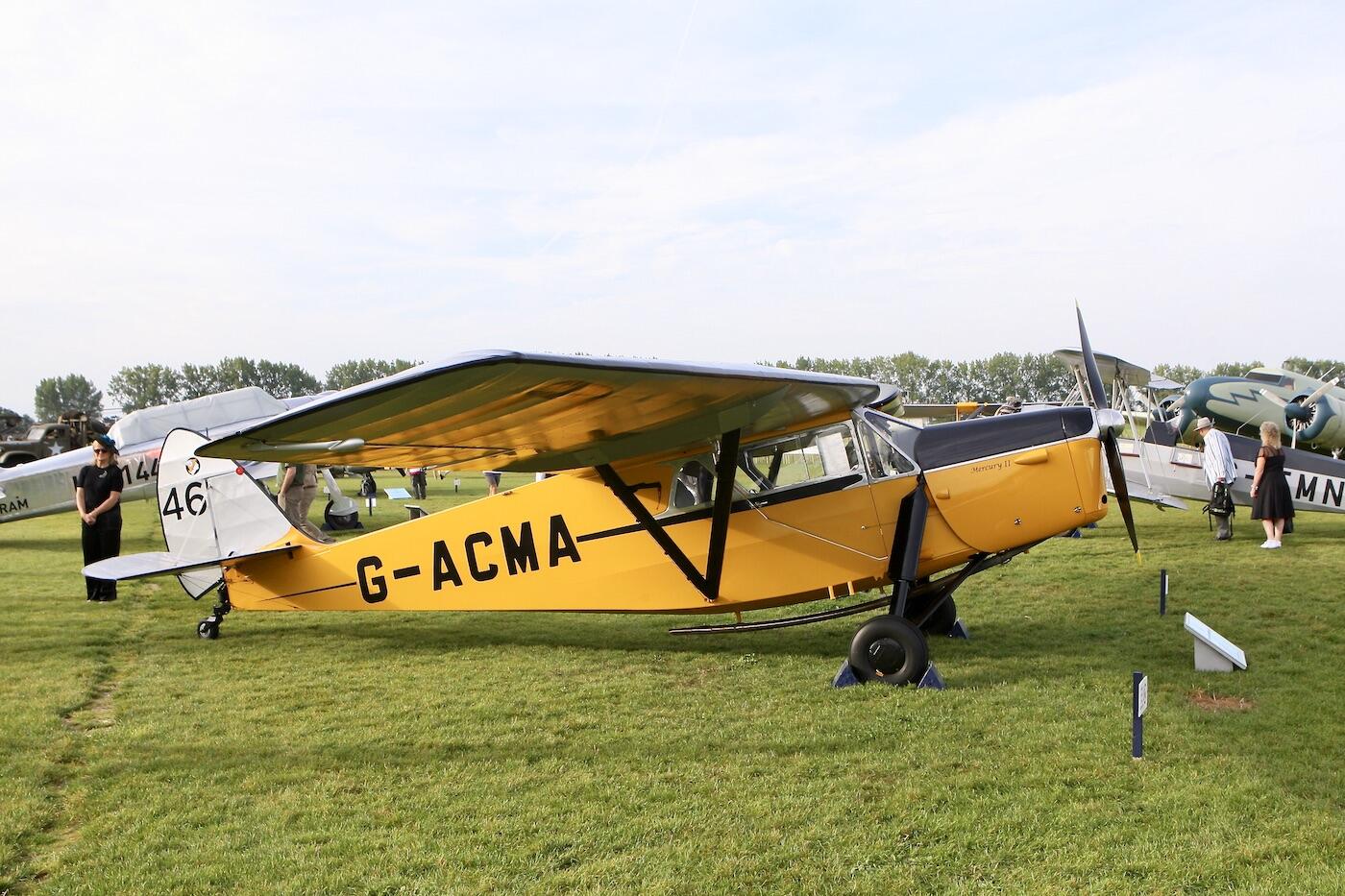
1934 De Havilland DH85 Leopard Moth, entered by Cliff Hawkins. As a successor to the Puss Moss the Leopard Moth entered production in 1933. Whilst similar in appearance the DH85 incorporated many updates in design and construction. The fuselage is a spruce and plywood box instead of a steel frame and the wing is tapered and now could be folded. The accommodation was the same as the Puss Moth with two passengers seated side by side behind the pilot. Power is provided by a 130hp Gipsy Major engine. This example was purchased new by the National Benzoil Company and is still finished in the company’s distinctive yellow and black colour scheme. In 1940 the aircraft entered into military service serving first as a target tug, and later as an Army Co-operation aircraft based at White Waltham. Following a crash at White Waltham the aircraft was rebuilt and sold to De Havilland in 1946 where it was flown by, amongst others, the company founder Sir Geoffrey de Havilland.
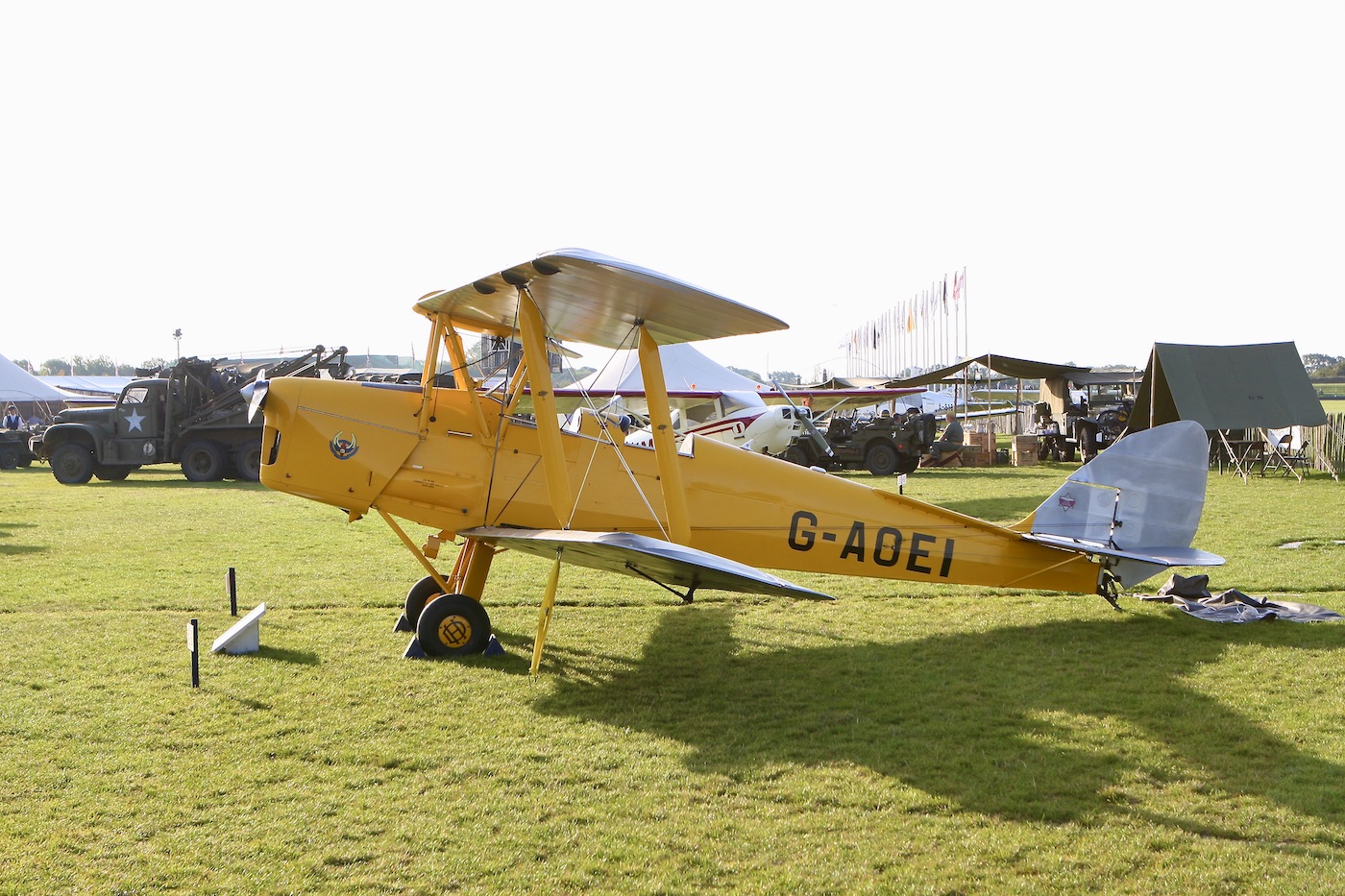
1939 De Havilland DH82 Tiger Moth, entered by ‘The Cambridge Flying Group’. This example was built for the RAF and was sent to France at the outbreak of World War 2 to provide support for the British Expeditionary Force flying messages and supplies across Northern France until the evacuation of Dunkirk, whereupon her whereabouts remain unrecorded until she reappeared at RAF Hendon six months later where she continued to serve with various communication squadrons until entering storage in October 1944. Designed by Geoffrey de Havilland to meet Air Ministry specification and based on the DH60 Gypsy Moth but with the wings swept and the upper wing struts moved forward to aid access to the front cockpit as required by the RAF. The DH82 first flew in 1931 and became the standard RAF basic trainer with many also being sold on the Civil market.
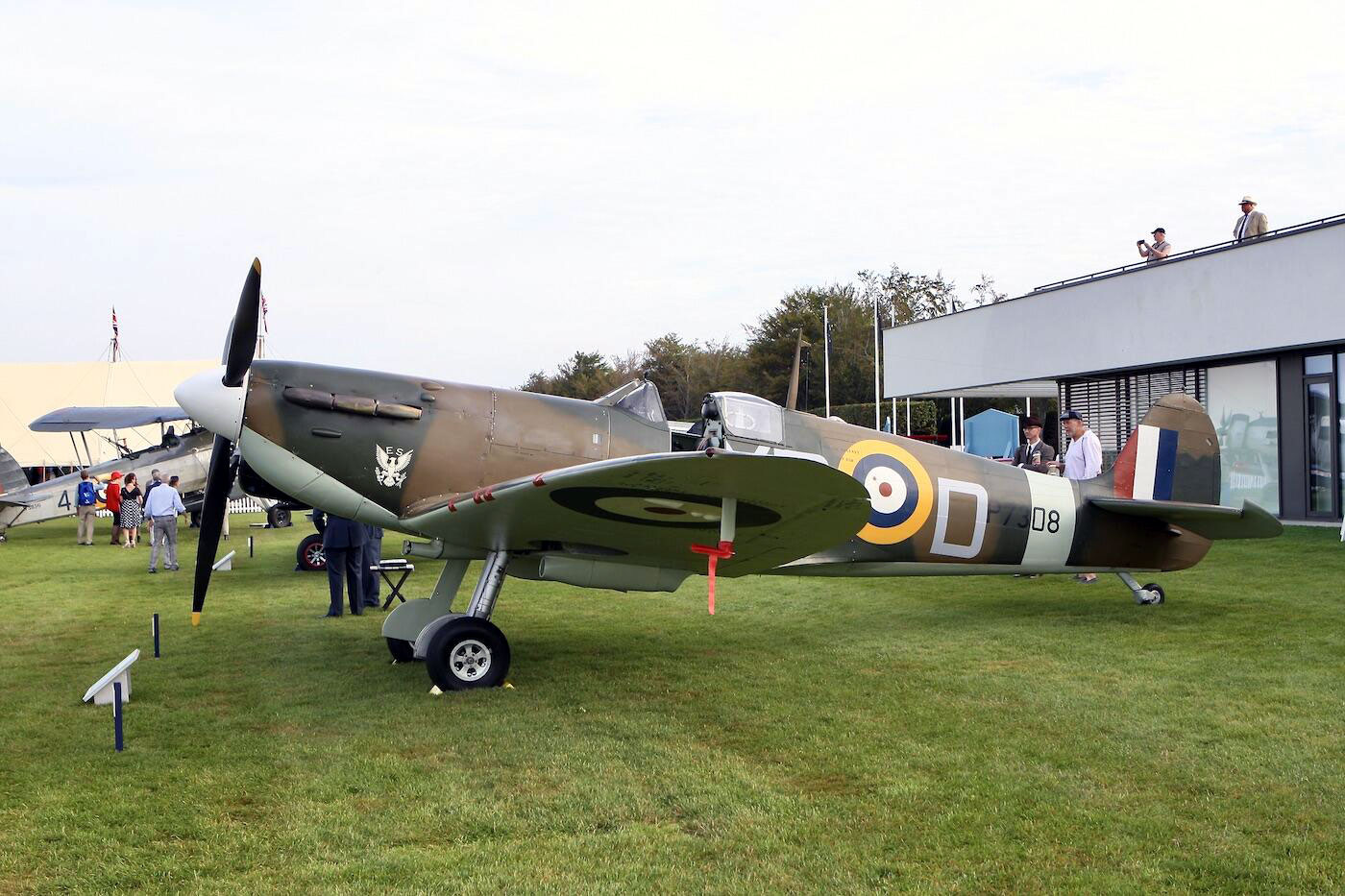
1941 Supermarine Spitfire MK1A AR213, entered by Dan Friedkin. Constructed by Westland at Yeovil in 1941. Between August 1941 and March 1942 AR213 was flown by top RAF Battle of Britain Ace James ‘Ginger’ Lacey during his time as an instructor. In February 1943 AR213 was transferred to 53 OTU at RAF Llandow, suffering a landing accident in April 1943. Moved to RAF Little Rissington for storage in Aug 1944 and struck off charge on the 30th November 1945.
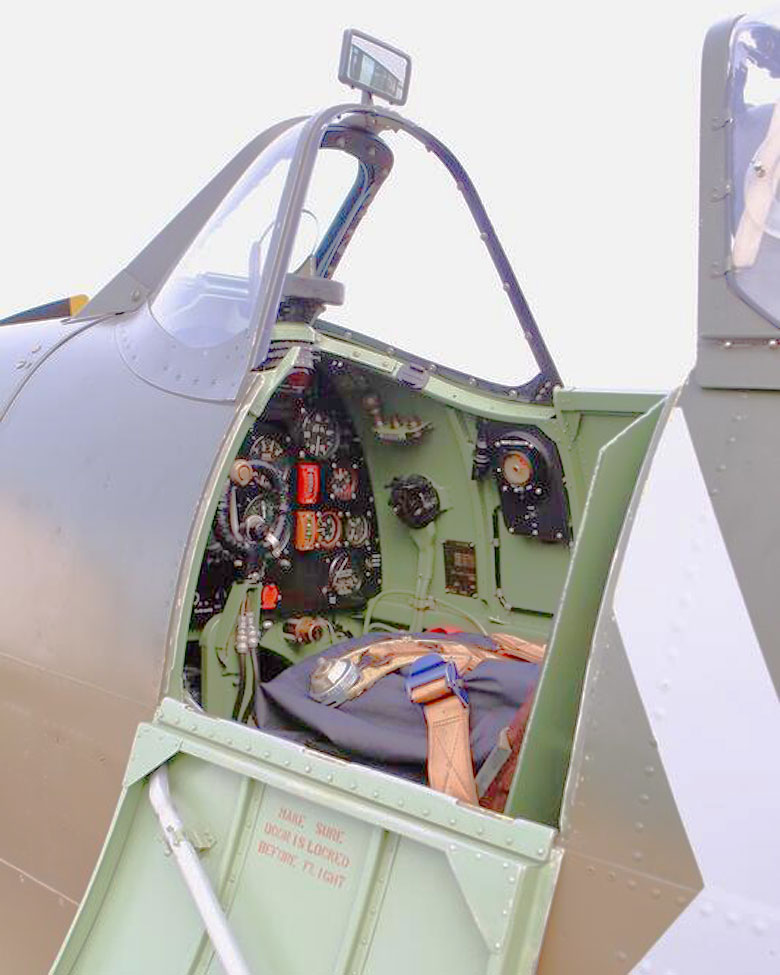
Registered as G-AIST in 1946 Group Captain Allen H Wheeler purchased her in August 1947 for the princely sum of £10, restored to flying condition at RAF Henlow in 1967 and flown in the movie ‘The Battle of Britain’ in 1968. The Honourable Patrick Lindsay purchased her from Captain Wheeler in about 1978 and retained her until his passing where upon she was purchased by Victor Gauntlett/Peter Livanos. In 2002 she entered into restoration returning to the air in 2007 in as near stock condition as was possible. The present owner purchased her in 2007 and she is now painted to represent P7308 of No 71 Eagle Squadron.
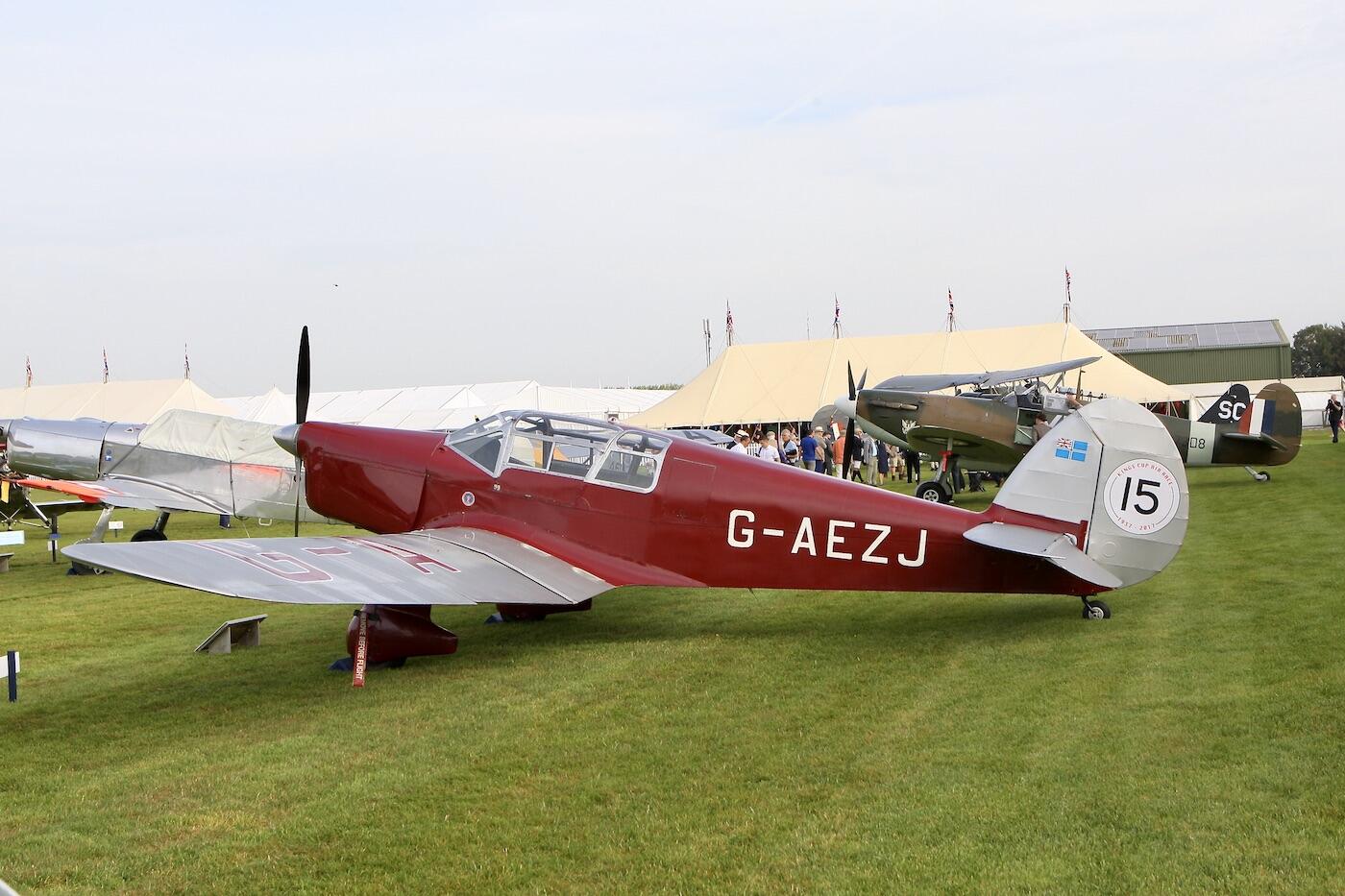
1937 Percival P10 Vega Gull, Entered by Dan Friedkin. G-AEZJ is number 45 out of a total of 90 examples constructed at the Percival factory at Luton Corporation airport. Registered to D Schuldham Schrieber who flew her to 6th place in that year’s Kings Cup air race. Later captured by the Germans, then sold to Sweden in 1942 where she continued to be flown until suffering a landing accident in 1968. She was then stored in a barn until being discovered in 1987 and returned to the UK to be restored. Her first post restoration flight was from Old Sarum in 1991; she then was moved to Biggin Hill where she remained active until being bought by her current custodian in 2017. This Vega Gull has a 39ft wingspan and folding wings, Is powered by a DH Gypsy Queen 2 inverted six cylinder engine of 202hp giving a top speed of 175 mph with a range of 850 miles, a maximum fuel capacity of 60 gallons and is the only airworthy example of its type flying today.
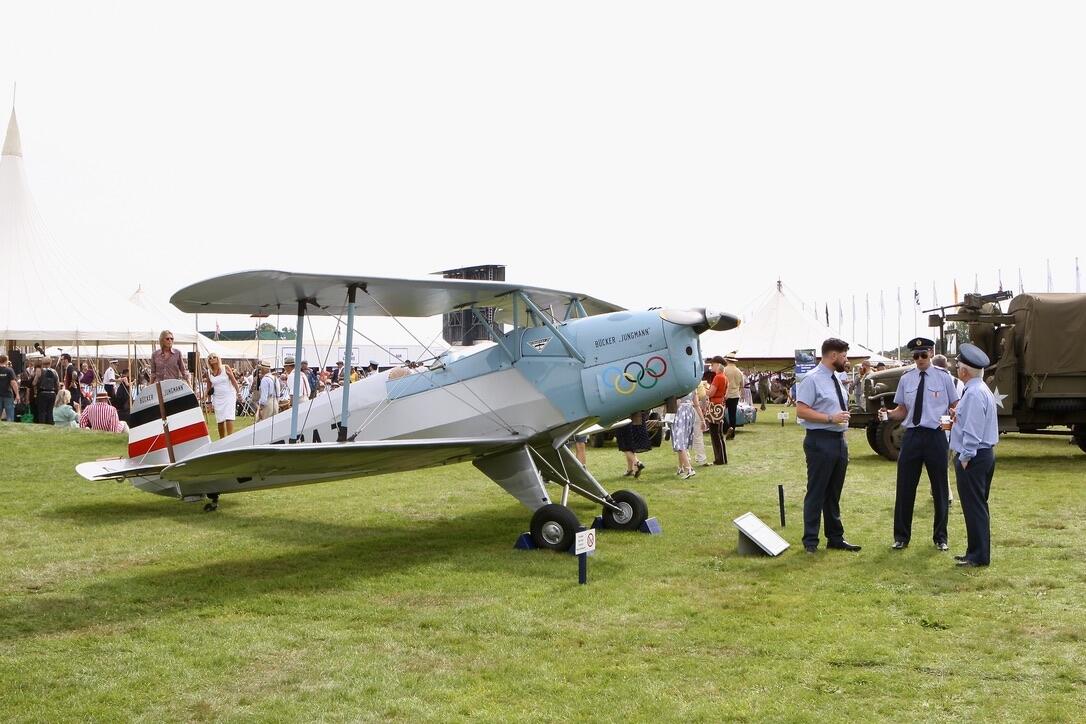
1954 Bucker (Casa 1.131) Jungmann, entered by Anna Walker and Pete Kynsey. Designed by Swedish designer Anders Anderson, the Bucker Jungmann was the first model produced by the Bucker Flugzeugbau Company of Johannisthal Germany. Founded in 1932, the prototype first flew in April 1934. Designed for sports, aerobatic and training use the prototype was powered by an 80hp Hirth HM60R engine but from 1936 production began with a 105hp Hirth 504 A-2 engine. Made under licence in several countries including Spain, Czechoslovakia, Hungary, Japan and Switzerland, an estimated 4000 examples were produced. This example was built in 1954 in Spain by CASA and was used as a basic trainer by the Spanish Air Force. Extensively restored in 1990 and powered by the 150hp ENMA Tigre G-IBV B engine with inverted fuel and oil systems and a smoke system for aerobatics. She carries the markings for the 1936 Berlin Olympics, the only Olympics to award a medal for Aerobatics.
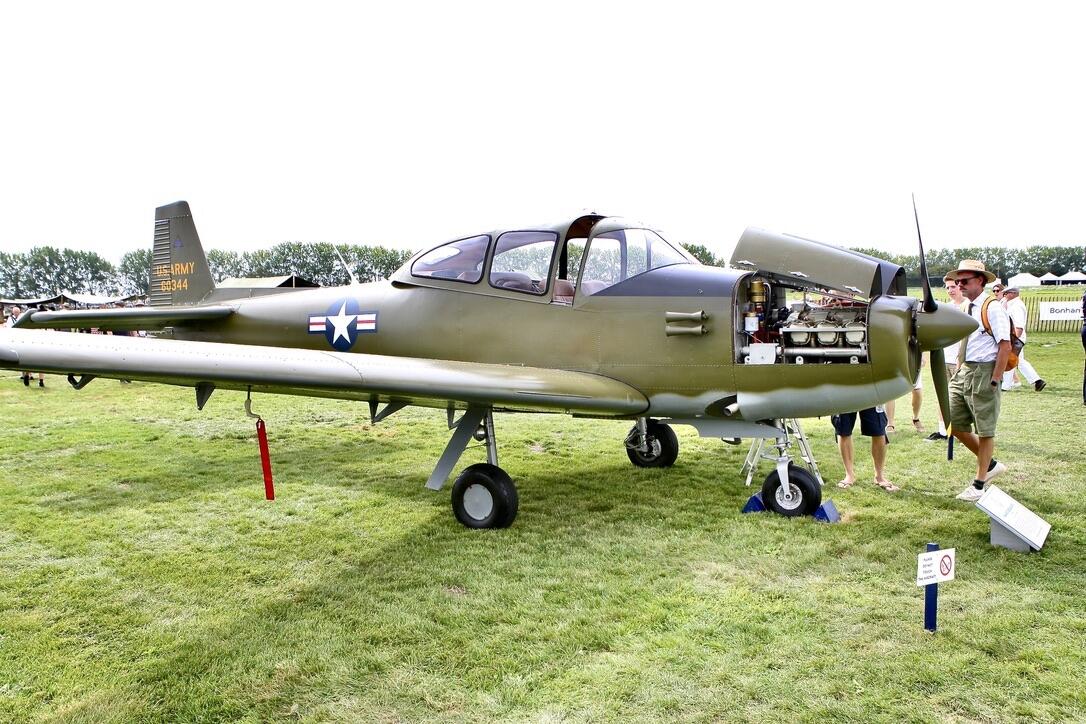
1946 North American Navion, entered by Simon Tilling. Designed in the late 1940s by North American Aviation in the hope of capturing the expected post war boom in civil aviation. The design attracted the interest of the United States armed forces and soon adopted the military designation L-17. The all metal aircraft powered by a 205hp Continental E185 engine was later produced by the Ryan Aeronautical Company in a B and C series. The design was then sold to Tusco Ltd who produced the final G series Rangemaster between 1961 and 1976. This example, N495C, was one of the first to come off the North American production line. After spending a number of years flying in Mexico the aircraft returned to the USA before being imported into the UK. The current owner obtained her in 2022 and she carries the markings of an L-17 serving with the US Army during the Korean War.
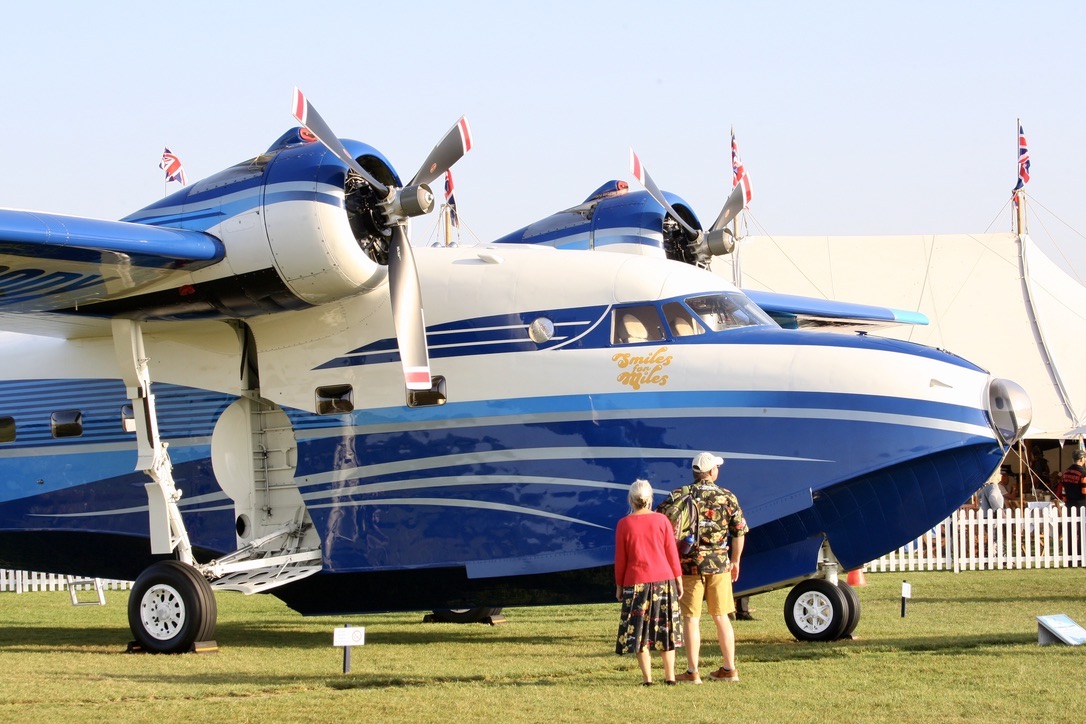
1951 Grumman HU-16 Albatross, entered by Philip Sarofim. Designed by Grumman Aircraft as a replacement for the US Navy’s fleet of Consolidated PBY Catalinas, the prototype, known as the G64, first flew in October 1947 as an improved version of the company’s Mallard amphibian aircraft. Fitted with two Wright R-1820-80A 1,525hp radial engines the Albatross offered a greater range and could take off and land on rough open seas with a greater payload, entering service with the US Air Force in 1949.
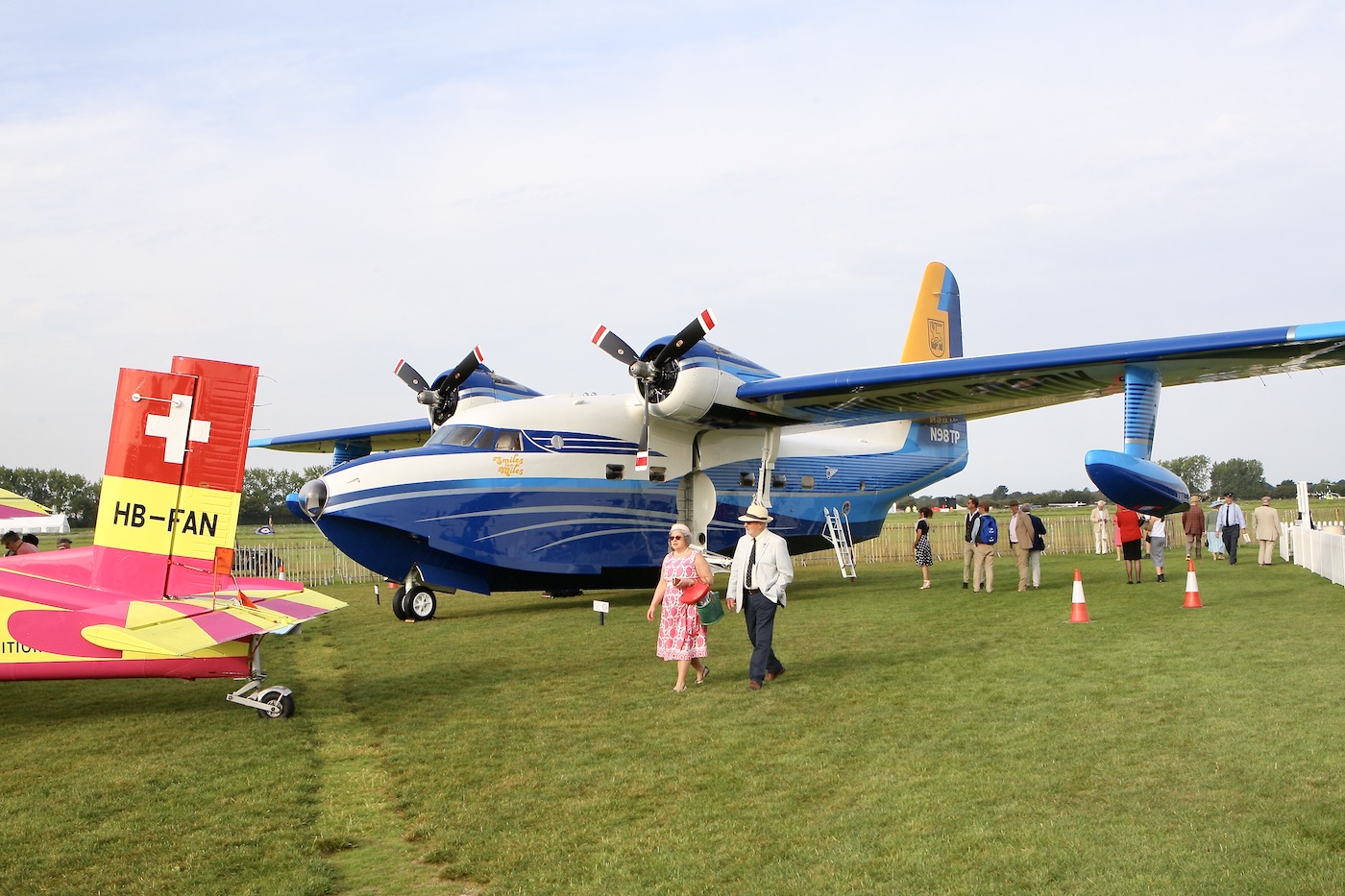
This example was constructed for the US Air Force in 1951 and is a rare Tri-Phibian being able to operate from water, land and also snow. During her service career she undertook numerous search and rescue missions, recovering injured service men of all services during the Korean and Vietnam wars; to this day many of her missions still remain classified. She has also operated from the Artic and the mountains of the Antarctic.
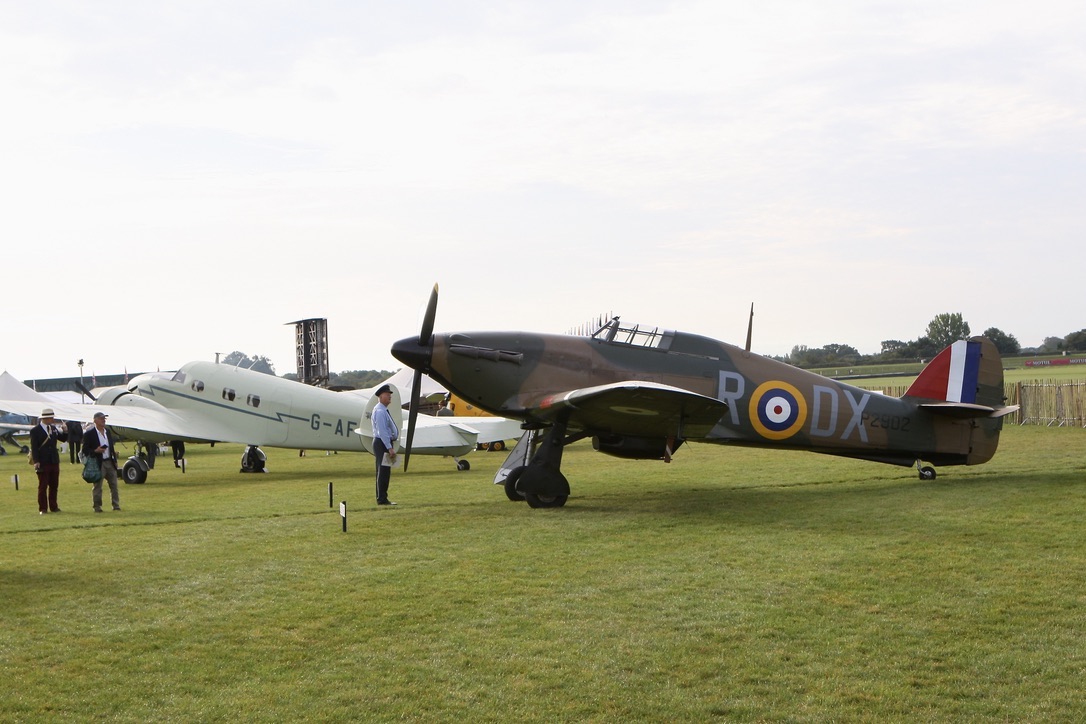
Entered by Ultimate Warbird Flights. Built by Gloster Aircraft in 1939 under contract No 962371/38/c.23A Hawker Hurricane MK1 P2902 G-ROBT first took flight on or around the 20th October 1939. By May 1940 P2902 was operational, flying shipping patrols from Drem on the East Coast of Scotland with 245 Squadron. On the 31st May 1940 whilst being flown by Pilot Officer Kenneth McGlashan towards the French coast to provide cover for the armada of little ships during the evacuation of Dunkirk (Operation Dynamo)…
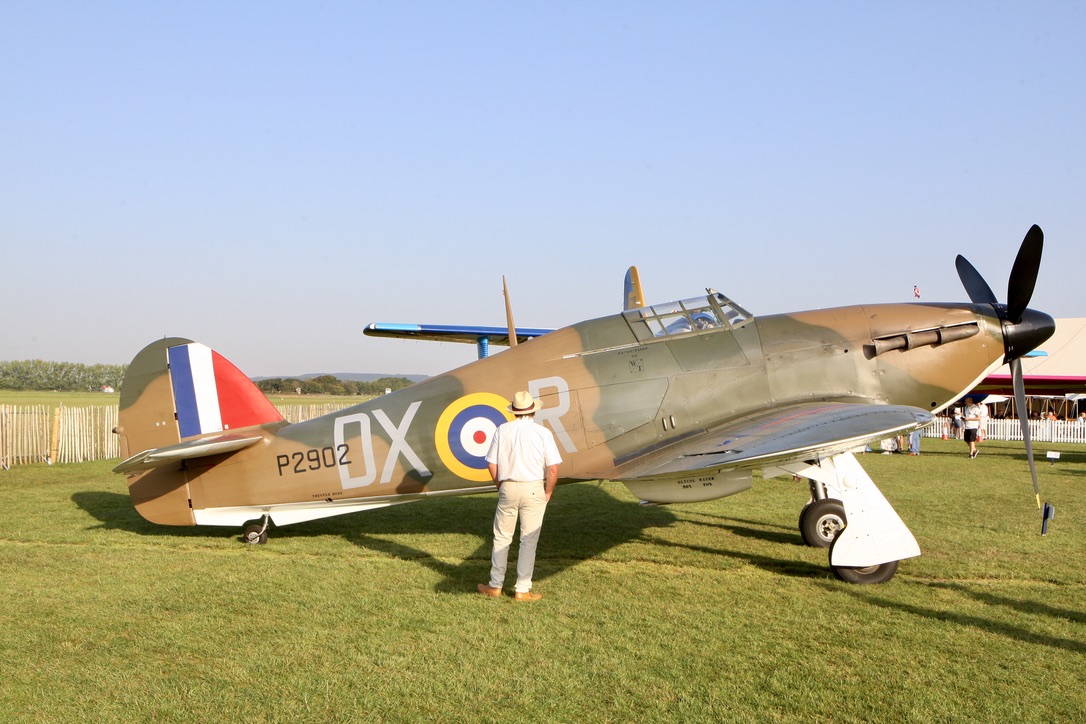
…McGlashan engaged with and was hit by fire from an ME109, though badly injured he managed to crash land on the beach where the wreckage was to remain until recovered by a group of French enthusiasts in 1988. The current owner obtained the remains sometime later and ultimately entrusted her return to flight to Hawker Restorations.
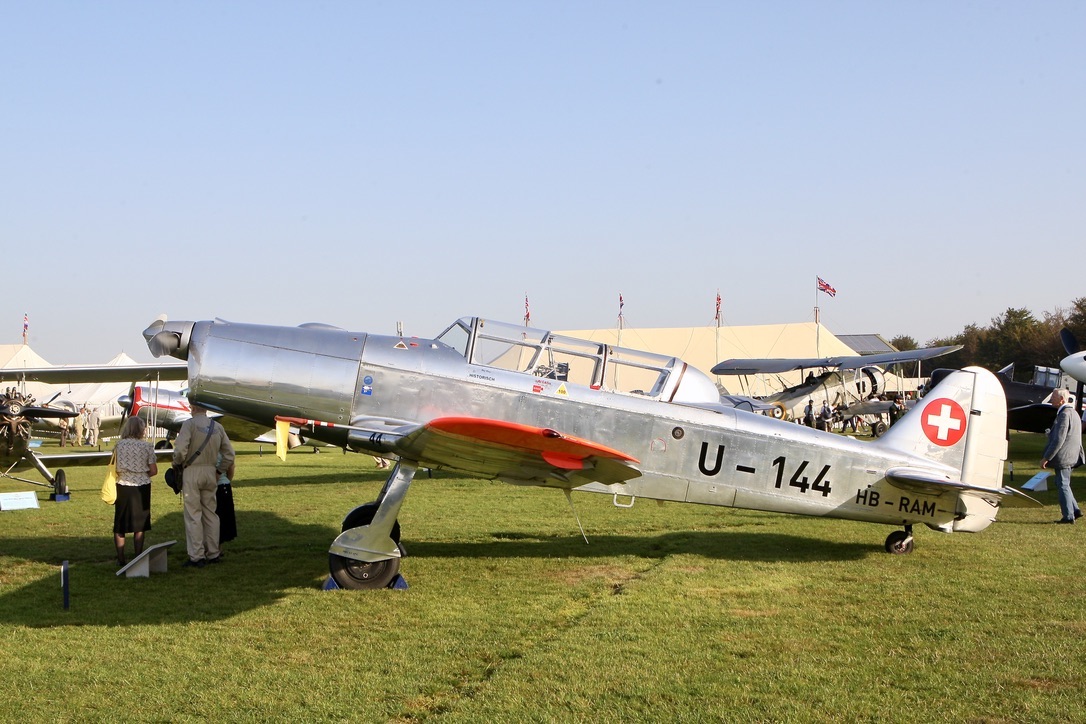
1950 Pilatus PC2, Entered by Rolf Blasi. Designed as a training aircraft for the Swiss Air Force the Pilatus PC2 first took flight on the 27th April 1945 and saw service between 1946 and 1981. Constructed of metal, wood and fabric and powered by a 370hp Argus V12 inverted air cooled piston engine. I understand that two versions were produced, an unarmed version, and a second version used as a weapons trainer with a machine gun fitted over the engine and bomb/rocket racks on the wings. I also understand that to save costs various parts were utilised from obsolete Swiss Air Force machinery including parts from the landing gear of the Messerschmitt 109s.

1939 Spartan 7W Executive. Entered by Sebastien Mazzuchett. Based in France since 2017 this Spartan 7W was once owned and flown by Paul Mantz, the famous air racer (three time Bendix Trophy winner) and Hollywood pilot (and incidentally one of my father’s aviation heroes) who lost his life whilst flying the Tallmantz Phoenix P1 during the making of the 1965 film Flight of the Phoenix. Established in Tulsa Oklahoma in 1928, the Spartan 7W Executive was produced during the late 1930s early 1940s. Designed to offer luxury and performance and powered by a 450hp Pratt and Whitney Wasp Junior the 7W could cruise at 200 mph with a range of 1000 miles. This example, N47W is number 25 of 34 and was purchased new by US company Luziers. Following the attack on Pearl Harbour she was pressed into service for the USAAF before being purchased in 1945 by Paul Mantz.
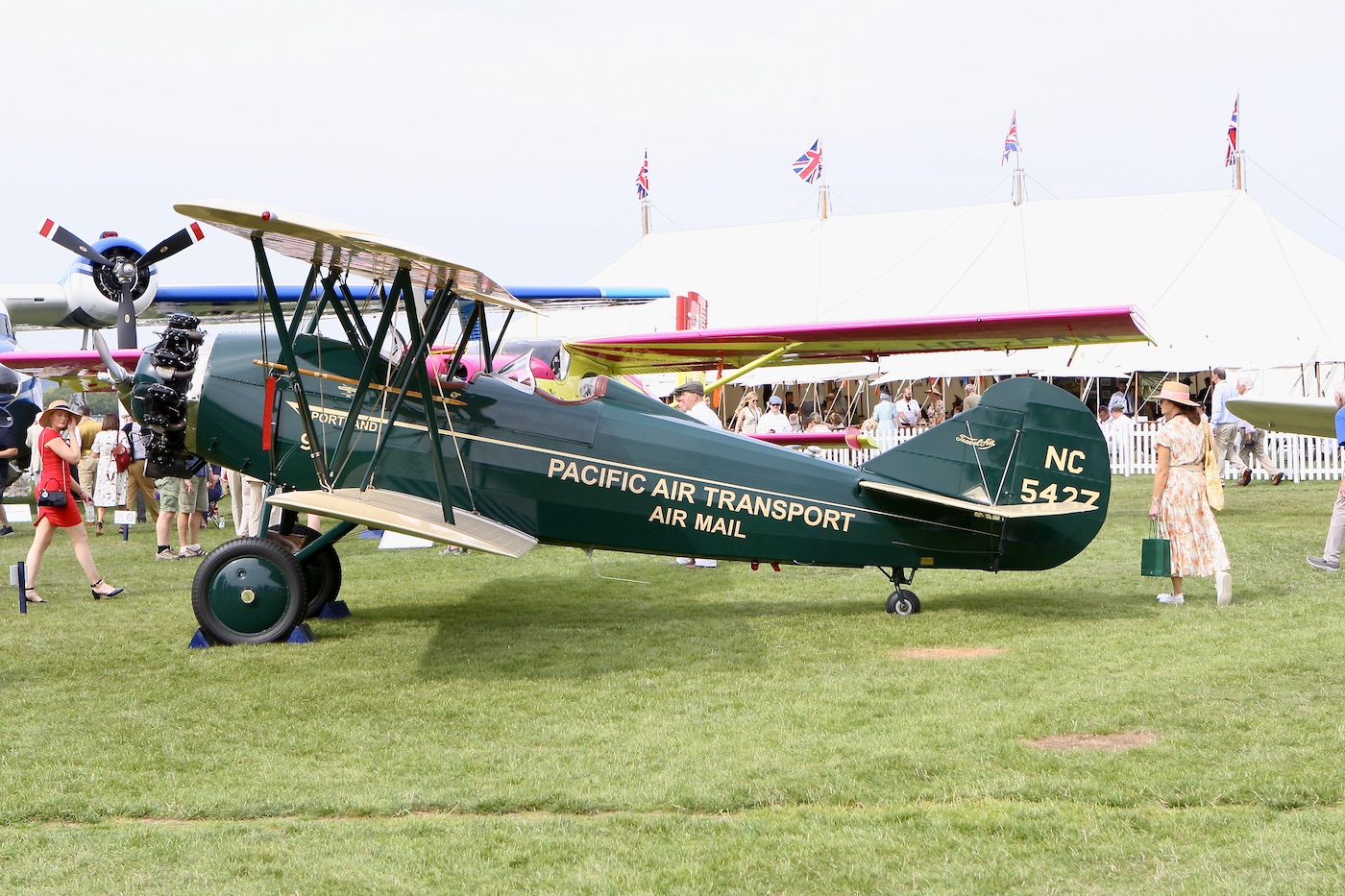
1928 Travel Air 4000, entered by Thomas Leaver. The Travel Air Company of Wichita Kansas was founded in 1925 by Clyde Cessna, Walter Beech, and Lloyd Stearman. Clyde Cessna left shortly after to start his own company, and in 1930 Travel Air was sold to the Curtiss Wright Corporation and moved to St Louis Missouri but the company folded during the great depression. This example NC-5427 was constructed as a Travel Air 3000 and sold in California. Used as a crop sprayer in Arizona between 1945 and 1970 during which time she was upgraded with various types of radial engines ultimately ending up in model 4000 specification. Restored in 1990 and painted in the colours of Pacific Air Transport, an airline formed in 1926 to provide air mail services in the USA.
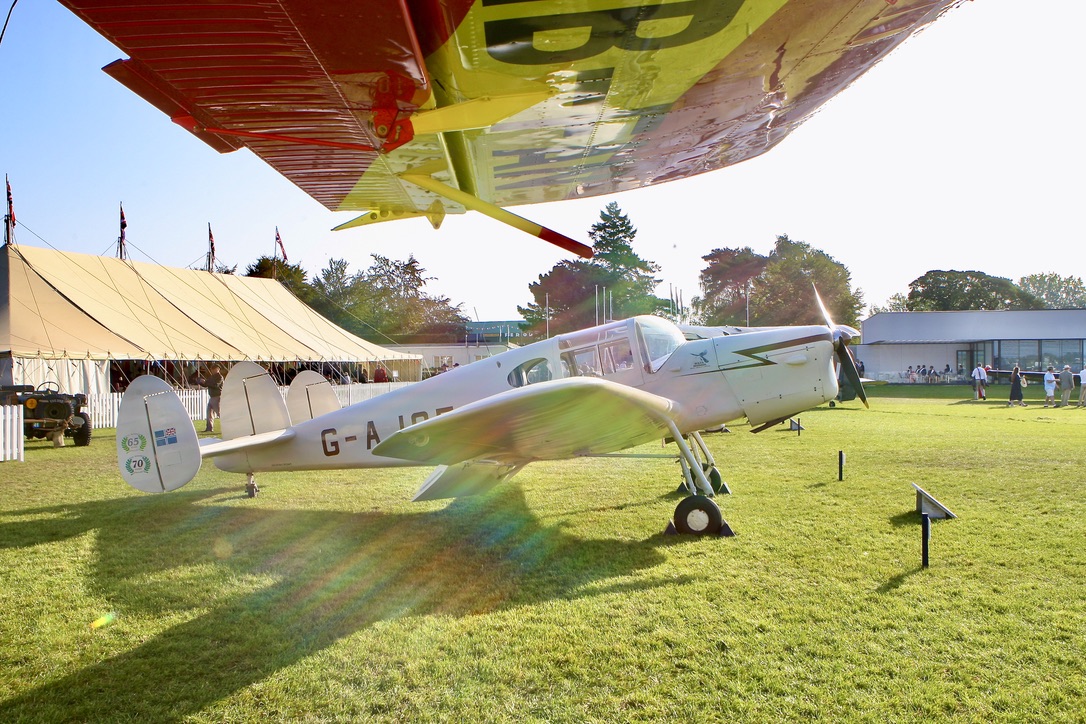
1947 Miles M38 Messenger 2A, Entered by Peter Bishop. The Miles Messenger was designed to meet a requirement set by the British Army for an Air Observation and Liaison aircraft. The prototype (a converted Miles M28 Mercury) first flew at Woodley on the 12th September 1942. This example is one of 65 examples built by Miles Aircraft Northern Ireland for the civilian market and is powered by a Blackburn Cirrus Major 111 engine rather than the de Havilland Gipsy Major 1D of the military version. Finished in the traditional Miles cream and red livery the current custodian has owned her since 2001.
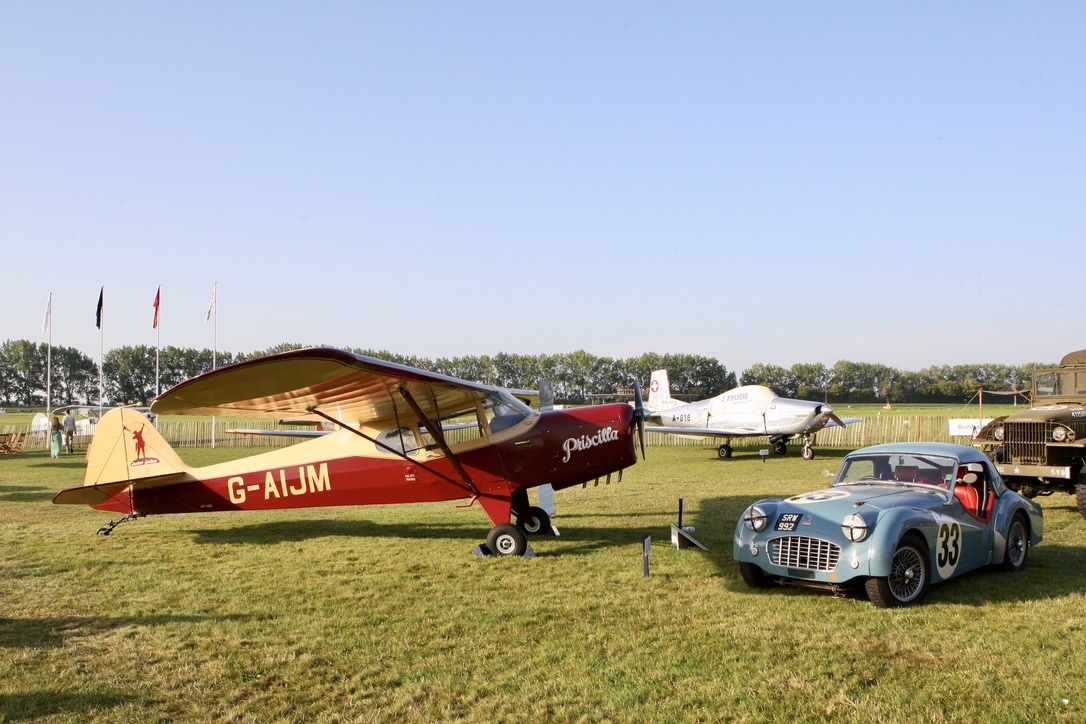
1946 Auster J4, entered by Nigel Huxtable. Whilst the Auster Aircraft Company of Reasby near Leicester built various marks of their aircraft this J4 is one of only 27 examples of this variant constructed with the 90HP Blackburn Cirrus Minor I engine. In 1956 this aircraft took part in a £50 wager between the British Automobile Racing club and the Royal Aero Club against a Triumph TR3 to see which was more economical over a 1500 mile race from Lands End to John O’Groats. The TR3 won and the then Duke of Richmond presented the winners with the cheque at Goodwood. Prior to the 2023 Revival the wager was revisited, this time for £500, with the cheque going to the Guide Dogs for the Blind. At the time of writing I do not know if the TR3 won again. The current owner purchased the aircraft in 1987 and then restored her, The name ‘Priscilla” on the cowling is a reference to the original owner’s wife.
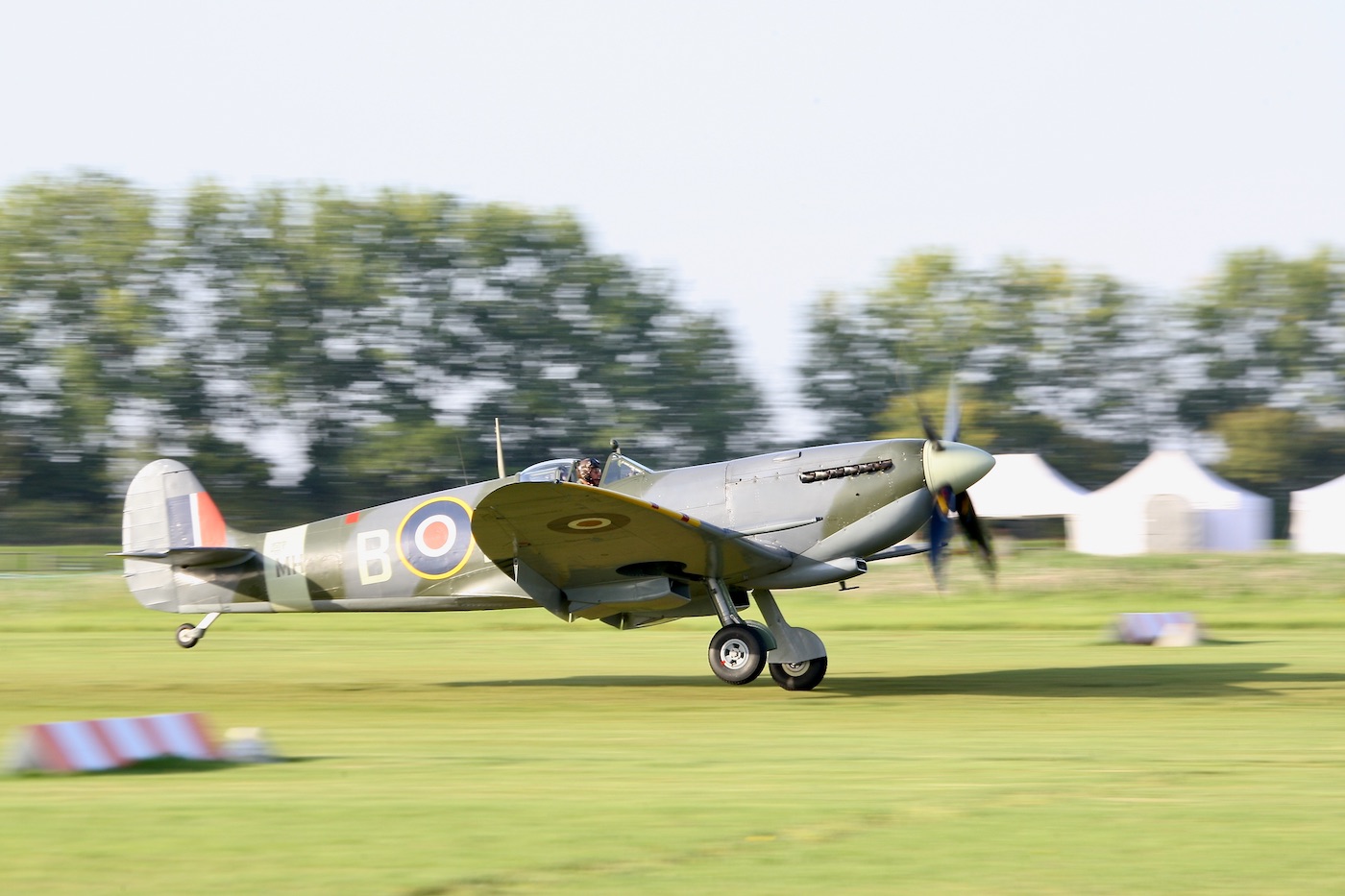
Whilst not an entrant in the Freddy March Spirit of Aviation award, the Revival would not be the Revival without an appearance by Vickers Supermarine Spitfire MK9 MH434 here dangling the Dunlops prior to touch down at RAF Westhampnet, aka the Goodwood Motor Circuit, having just completed the dawn patrol flight together with Spitfire ML417 bright and early on the Saturday morning.
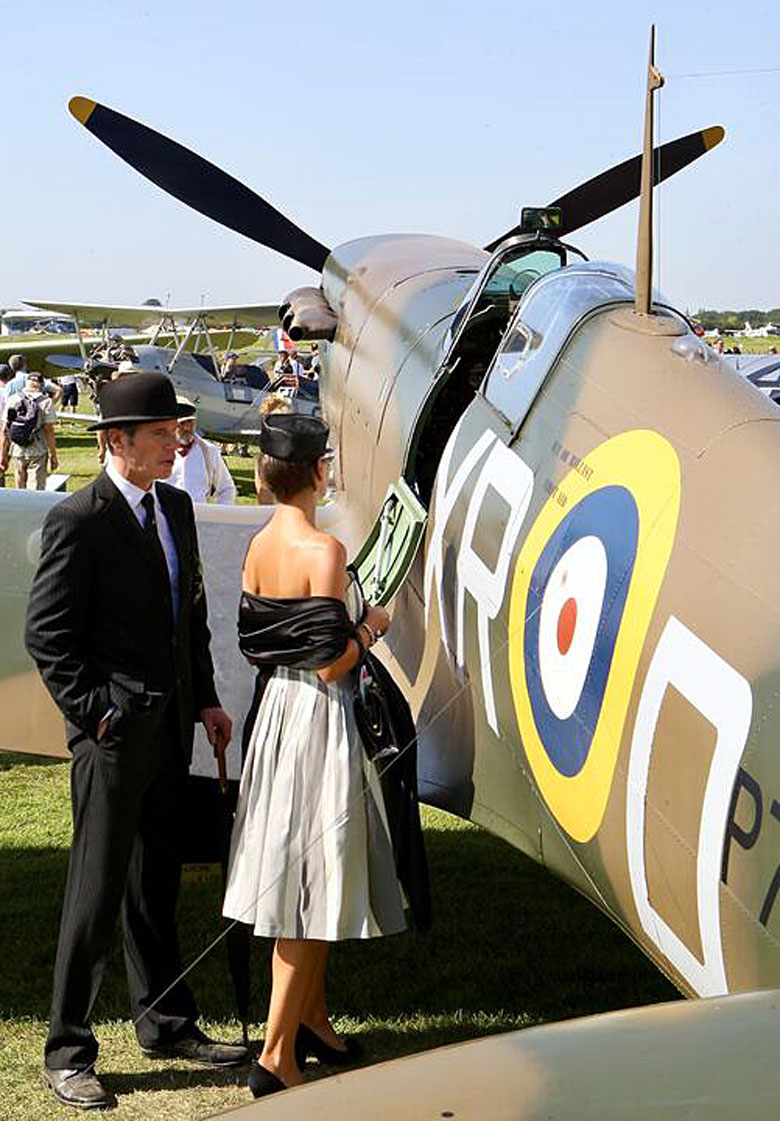
Jonathan,
Very nicely done. I appreciated the provenance of each, with the detail of derelict condition to restoration.
In the 1980s I had been asked to direct an operation for the recovery of BofB aircraft from the channel, and consequent restoration for a 50th royal flyover.
We called in the firm that pioneered deep water aircraft recovery, who were at the forefront of advancing side-scan sonar tech.
In association with Kew and access to flight sortie records, along with post war cabling / submarine maps of the channel, we were able to map areas of interest of low and slow channel ditches.
We were proceeding with the full enthusiastic support of the RAF, Royal Navy, and US Navy.
We got as far as getting Eric Sevareid, one of Morrows Boys, to come on to do the voice over for the TV special, had to recoup some of the money somehow.
We had one final hurdle, MOD, and the British definition of war graves. Because of the breath of the Empire, the traditional MOD definition was essentially: where a man fell. Unlike the US which repatriates its solders, sailors and airmen as possible.
Point being, if we raised, – float / flew with our special May Wests – any aircraft with the pilot in it we had to cut the cables. Balanced against one good weather month in the channel with all the prior grid search cost and raising an aircraft, or best case, two, with great disappointment, we stepped back. One of the most disappointed was my liaison at the Royal Navy who had been our point man with the MOD.
Also, much to the disappointment of all the remaining RAF, Eagle and Commonwealth Squadron guys then alive with whom we had conducted initial interviews.
But no discussion of period aircraft is complete though without our friend, Alain deCadenet’s comments: https://www.youtube.com/watch?v=4iOoiEbtf2w